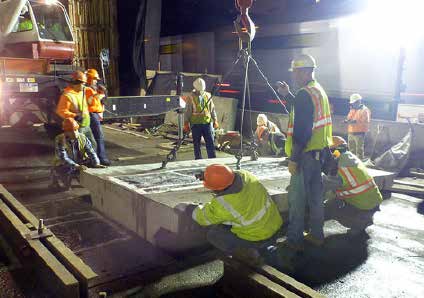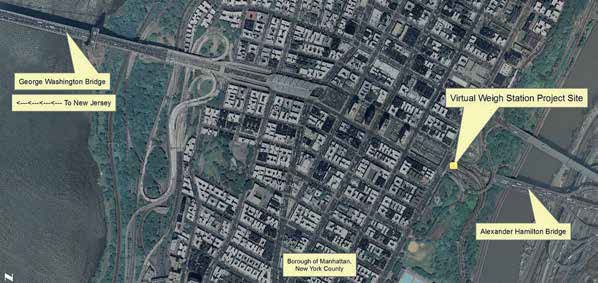Primer for Improved Urban Freight Mobility and Delivery
|
||
Key Accomplishments
|
New York City DOT (NYCDOT) uses WIM technology to monitor truck activity on bridges and roadways. Overweight trucks can accelerate the deterioration of pavement and bridge structures, and overheight trucks can strike bridges and overpasses, damaging infrastructure and causing traffic delays from strike incidents. In addition, without monitoring and enforcing weight limits, carriers who operate overweight vehicles gain an unfair advantage over carriers who comply.
The WIM sensors weigh each truck that travels over them and transfers data electronically to NYCDOT staff for analysis. Data are used to develop assessments of the number of overweight trucks and to monitor trends, giving NYCDOT valuable information to quantify problems, target information and enforcement activities, and rally other agencies and stakeholders toward implementing solutions. The WIM data also provides valuable information on truck travel patterns and is being used to support truck route, asset management, and other policy decisions. NYCDOT is deploying WIM sensors at strategic locations along major truck routes entering and exiting the city. The first deployment was on I-95 at the Alexander Hamilton Bridge in July 2014. About 50 percent of all trucks entering the city travel on this highway segment. Installing WIM at the bridge provided an opportunity to gather data on a large portion of the truck traffic traveling into and out of the city.

Installation of a WIM site in New York City. Source: NYCDOT.
WIM is not used for enforcement, as State law currently does not allow this method of enforcement, and NYCDOT would like to further calibrate and improve the accuracy of the WIM before seeking the authority to use the technology for enforcement purposes.

Location of WIM devices. Source: NYCDOT
This initiative was led by NYCDOT in cooperation with New York State DOT and the Port Authority of New York & New Jersey. NYCDOT recognized an opportunity to coordinate with New York State DOT in advance of a planned $415 million rehabilitation project on the Alexander Hamilton Bridge. WIM allows New York State DOT to monitor truck activity on its asset, I-95, and allows the Port Authority to monitor truck activity on this approach to one of its nearby assets, the George Washington Bridge.
Using a mix of Federal Surface Transportation Program and local funds, NYCDOT secured funding for the installation of the single load cell WIM sensor in 2014. State DOT installed gantries, cameras, and license plate readers to capture license plate and U.S. DOT numbers. In 2016, NYCDOT installed two more WIM sites in Queens to collect and analyze truck weight data for planning applications. Future WIM sites are envisioned along the truck route network at cordon points near borders with neighboring jurisdictions. Through multi-agency collaboration platforms, such as the Goods Movement Action Program, NYCDOT hopes to leverage an array of funding sources and to develop and/or support competitive grant applications that demonstrate multi-agency support and cooperation.
Diniece Peters, Office of Freight Mobility, NYCDOT, (212) 442-7199, dpeters@dot.nyc.gov
|
United States Department of Transportation - Federal Highway Administration |
||